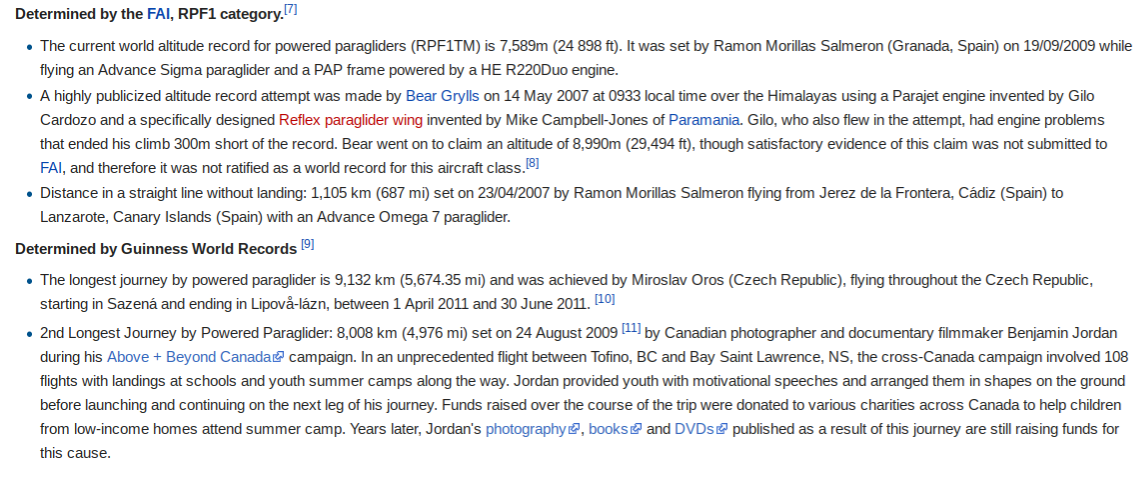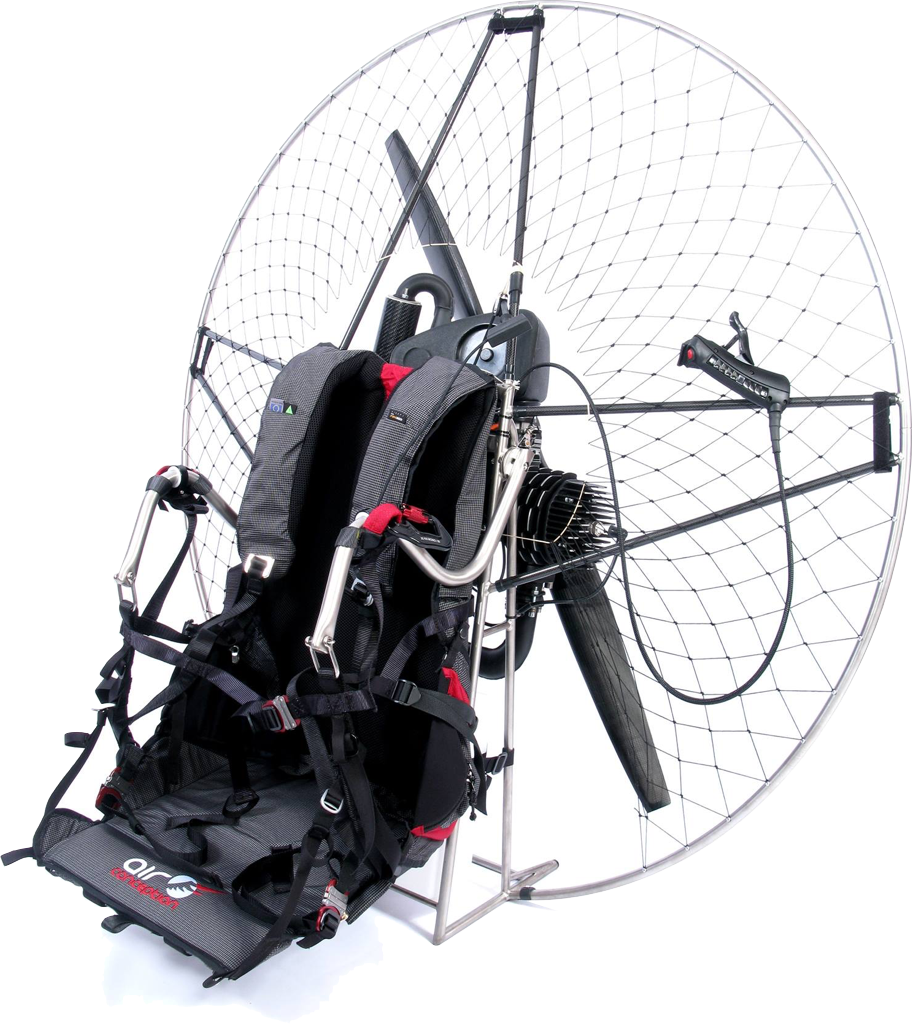- Paramotor is the generic name for the harness and propulsive portion of a powered paraglider ("PPG").
- There are two basic types; foot launch and wheel launch.
- Foot Launch you run to take off/to land
- Wheel launch is like a tricycle/go kart
FAQ
Q: How fast are they/how high can you get?
A: Powered paragliders usually fly between 15 and 50 mph (25 and 72 km/h) at altitudes from 'foot-dragging on the water' up to 24,000+ ft (5400 m) although most flying is done under 500 ft (150 m) AGL (above ground level)
Q: If the engine failed would you die?
A: It wouldn't be extremely important, the engine only propels the craft forward, what keeps your airborne is your airfoil, referred to as your "wing".
Q: How much do they cost?
Paramotors are a pretty pricey hobby, the entire set up will run you about 10,000 dollars. Instructors (the damn vampires), expect you to pay a few thousand to teach you to fly them. This is the reason I don't have one.
World Records

Licencing/Permits/Legality
Paramotors are classified in the US and many other countries as "Ultralight Aircraft", meaning neither license nor permit is required to pilot (You should still seek instruction anyways) them so long as they meet the specific criteria for Ultralight classification. The following is the Federal Aviation Administration's (FAA) criteria for Ultralights in the US:
- has only one seat
- Is used only for recreational or sport flying
- Does not have a U.S. or foreign airworthiness certificate
- If unpowered, weighs less than 155 pounds
- If powered:
- Weighs less than 254 pounds' (115 kg) empty weight, excluding floats and safety devices
- Has a maximum fuel capacity of 5 U.S. gallons (19 L)
- Has a top speed of 55 knots' (102 km/h; 63 mph) calibrated airspeed at full power in level flight.
- Has a power-off stall speed of 24 knots' (45 km/h; 28 mph) calibrated airspeed or less






